 Recently I have developed a passion for mending. I was invigorated by reading the books Mend! by Kate Sekules, and Visible Mending, and by Arounna Khounnoraj, that have all sorts of advice, instructions, and inspiration, e.g., for darning socks, or patching holes. While one of my daughters and her husband were visiting I worked my way through their torn clothing, and holes in woolen socks. I have moved on to shirt collars and ripped sheets. It feels so satisfying to me to take something that would be discarded, and make it usable again. Sometimes the item is even enhanced in the process. Hand sewing is a soothing activity for me. Fabric holds memories visually and through touch, and I revisit those memories while mending, and when wearing the items again. Sometimes I even re-purpose the item for another use. I can do hand sewing while in conversation with others, or while listening to something on audio. I wonder if I can take this approach to my torn emotions, or the ‘holes’ made by grief?
Recently I have developed a passion for mending. I was invigorated by reading the books Mend! by Kate Sekules, and Visible Mending, and by Arounna Khounnoraj, that have all sorts of advice, instructions, and inspiration, e.g., for darning socks, or patching holes. While one of my daughters and her husband were visiting I worked my way through their torn clothing, and holes in woolen socks. I have moved on to shirt collars and ripped sheets. It feels so satisfying to me to take something that would be discarded, and make it usable again. Sometimes the item is even enhanced in the process. Hand sewing is a soothing activity for me. Fabric holds memories visually and through touch, and I revisit those memories while mending, and when wearing the items again. Sometimes I even re-purpose the item for another use. I can do hand sewing while in conversation with others, or while listening to something on audio. I wonder if I can take this approach to my torn emotions, or the ‘holes’ made by grief?
-
home
about
SUBSCRIBE
links

 One of the reasons I go to our local farmers market is to get lost in the visual beauty of the fruits and vegetables and flowers. I take in all the smells too. It is a high spot of summer for me. I bought these beets even though they looked rather unattractive. When I got home, I decided to sketch them. At first, they just looked brown and muddy, but as I drew them, I detected subtleties. I thought about how things in our lives that do not look great on the outside, can reveal beauty and goodness nevertheless. And I haven’t even cooked them yet.
One of the reasons I go to our local farmers market is to get lost in the visual beauty of the fruits and vegetables and flowers. I take in all the smells too. It is a high spot of summer for me. I bought these beets even though they looked rather unattractive. When I got home, I decided to sketch them. At first, they just looked brown and muddy, but as I drew them, I detected subtleties. I thought about how things in our lives that do not look great on the outside, can reveal beauty and goodness nevertheless. And I haven’t even cooked them yet.



 When we have experienced emotional or physical or relationship damage in the past, it can continue to feel frustrating at best and irreparably harmful at worst. I so often look at the broken places as problems, limitations, and inadequacies. Or I try to ignore them. But the kintsugi approach actually highlights the beauty in repairs.
When we have experienced emotional or physical or relationship damage in the past, it can continue to feel frustrating at best and irreparably harmful at worst. I so often look at the broken places as problems, limitations, and inadequacies. Or I try to ignore them. But the kintsugi approach actually highlights the beauty in repairs.

 The poet WH Auden said that the artist feels the impulse to create a work of art when the passive awe provoked is transformed into a desire to express that awe in a rite of worship. To be fit homage, he said, this rite must be beautiful. We do not always achieve our goal to create something beautiful, but our desire to do so is good in itself.
The poet WH Auden said that the artist feels the impulse to create a work of art when the passive awe provoked is transformed into a desire to express that awe in a rite of worship. To be fit homage, he said, this rite must be beautiful. We do not always achieve our goal to create something beautiful, but our desire to do so is good in itself.
 I ‘listen’ to poetry to hear what speaks to me. Each of us hears a poem in a different way. I have been finding nourishment in these lines from the poem “Somewhere” (from Laboratories of the Spirit, Macmillan 1975) by the Welsh poet R.S.Thomas.
I ‘listen’ to poetry to hear what speaks to me. Each of us hears a poem in a different way. I have been finding nourishment in these lines from the poem “Somewhere” (from Laboratories of the Spirit, Macmillan 1975) by the Welsh poet R.S.Thomas.

 One of the things that holds me back from creating things is the fear of making mistakes. When doing this drawing, my reddish pen ran out of ink, and then the yellowish ink i changed to ran unexpectedly. But in the end, something unfolded that I could not have imagined from the start. Life can be like that too. Things we think are bad mistakes can lead to unexpected and good outcomes.
One of the things that holds me back from creating things is the fear of making mistakes. When doing this drawing, my reddish pen ran out of ink, and then the yellowish ink i changed to ran unexpectedly. But in the end, something unfolded that I could not have imagined from the start. Life can be like that too. Things we think are bad mistakes can lead to unexpected and good outcomes.
 I do not like conflict. But we just cannot avoid some of it in life. Others can be aggressive, we can feel outraged, or we can just have strong disagreements. The words in this drawing of mine are from a set of translations/interpretations from The Way of Chuang Tzu by Thomas Merton.
I do not like conflict. But we just cannot avoid some of it in life. Others can be aggressive, we can feel outraged, or we can just have strong disagreements. The words in this drawing of mine are from a set of translations/interpretations from The Way of Chuang Tzu by Thomas Merton.




 I have always loved to dance, and to watch others dancing. There is something about dancing that can express joy in fantastic ways, connecting our feelings of joy to how we feel in our bodies. I have enjoyed a video recently, of the TU Dance Company in a collaboration with the singer Bon Iver, and I enjoyed sketching the dancers, entering into their experience while doing so (
I have always loved to dance, and to watch others dancing. There is something about dancing that can express joy in fantastic ways, connecting our feelings of joy to how we feel in our bodies. I have enjoyed a video recently, of the TU Dance Company in a collaboration with the singer Bon Iver, and I enjoyed sketching the dancers, entering into their experience while doing so (
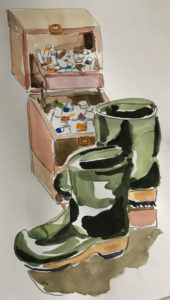
 In so much of life I see words obscuring truth. Here is something that reminds me that words don’t necessarily hide the truth, but can liberate it.
In so much of life I see words obscuring truth. Here is something that reminds me that words don’t necessarily hide the truth, but can liberate it. Flowers grow out of dark moments.
Therefore, each moment is vital. It affects
the whole. Life is a succession of moments and to live each, is to succeed.
Flowers grow out of dark moments.
Therefore, each moment is vital. It affects
the whole. Life is a succession of moments and to live each, is to succeed.
 As I reflected on the days here in the northern hemisphere getting darker and darker, this quote from Merton seemed just right. This is from my advent calendar (click
As I reflected on the days here in the northern hemisphere getting darker and darker, this quote from Merton seemed just right. This is from my advent calendar (click 




 …Humbly,
…Humbly,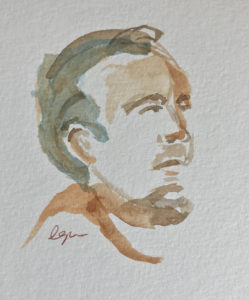


 “People who place their small time into the heart of eternity, which they already carry within, will suddenly realize that even small things, have inexpressible depths, are messengers of eternity, are always more than they appear to be, are like drops of water in which is reflected the entire sky, like signs pointing beyond themselves, like messengers running ahead of the message they are carrying and announcing the coming of eternity, like shadows of true reality that are cast over us because the real is already very near.”—Karl Rahner (trans. Annemarie Kidder)
“People who place their small time into the heart of eternity, which they already carry within, will suddenly realize that even small things, have inexpressible depths, are messengers of eternity, are always more than they appear to be, are like drops of water in which is reflected the entire sky, like signs pointing beyond themselves, like messengers running ahead of the message they are carrying and announcing the coming of eternity, like shadows of true reality that are cast over us because the real is already very near.”—Karl Rahner (trans. Annemarie Kidder)

 I have been part of a group of scholars these past few months, discussing suffering from the perspectives of literature, philosophy, theology and psychology. During our weekly conversations I have found that drawing people in the group, as always, helps me to focus. Although ideas are so often the center of academic discussions, it is the human beings that speak to me. Each person has a depth of being, a fullness of life, that I want to capture somehow. Doing this brings me to appreciate them more.
I have been part of a group of scholars these past few months, discussing suffering from the perspectives of literature, philosophy, theology and psychology. During our weekly conversations I have found that drawing people in the group, as always, helps me to focus. Although ideas are so often the center of academic discussions, it is the human beings that speak to me. Each person has a depth of being, a fullness of life, that I want to capture somehow. Doing this brings me to appreciate them more.
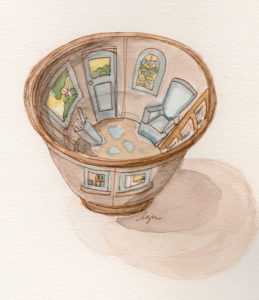

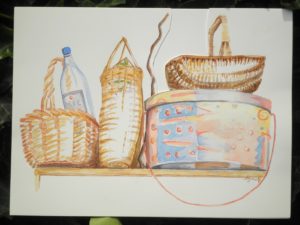
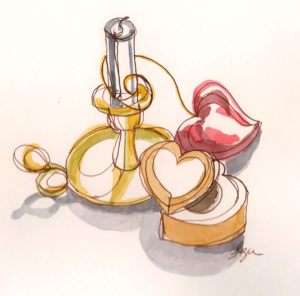
 My continuing passion is to part a curtain, that invisible veil of indifference that falls between us and that blinds us to each other’s presence, each other’s wonder, each other’s human plight.
My continuing passion is to part a curtain, that invisible veil of indifference that falls between us and that blinds us to each other’s presence, each other’s wonder, each other’s human plight.



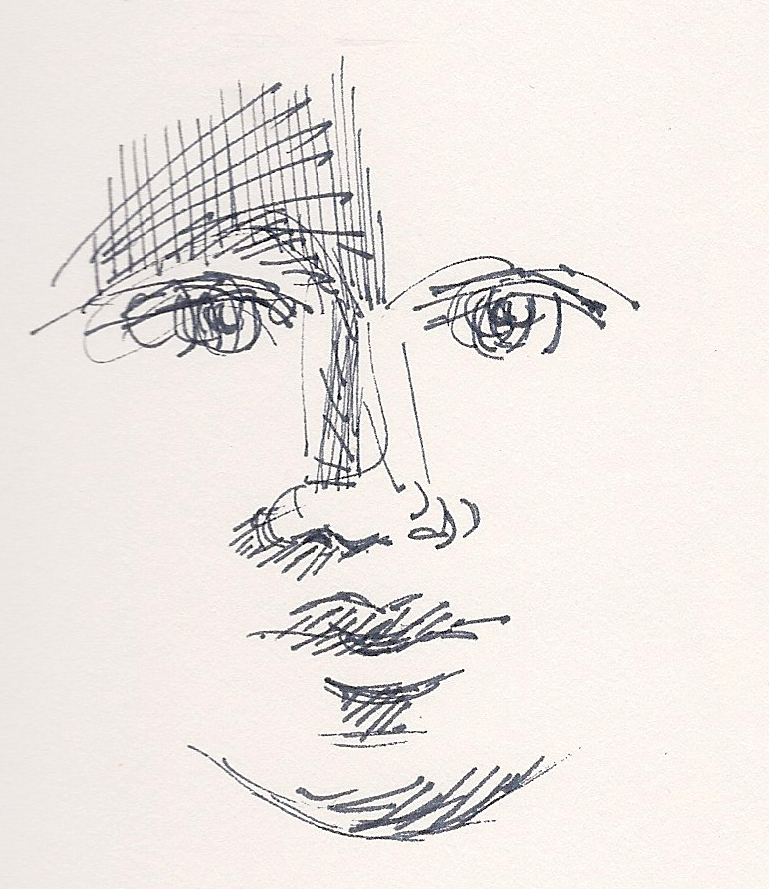 There is always
There is always





 As I feel the first nip in the air, summer is coming to a close, but there are still memories of many things that made this summer wonderful – including the farmers’ markets and the Lake Michigan beach. And opportunities to draw them, from life and from memory and imagination.
As I feel the first nip in the air, summer is coming to a close, but there are still memories of many things that made this summer wonderful – including the farmers’ markets and the Lake Michigan beach. And opportunities to draw them, from life and from memory and imagination.
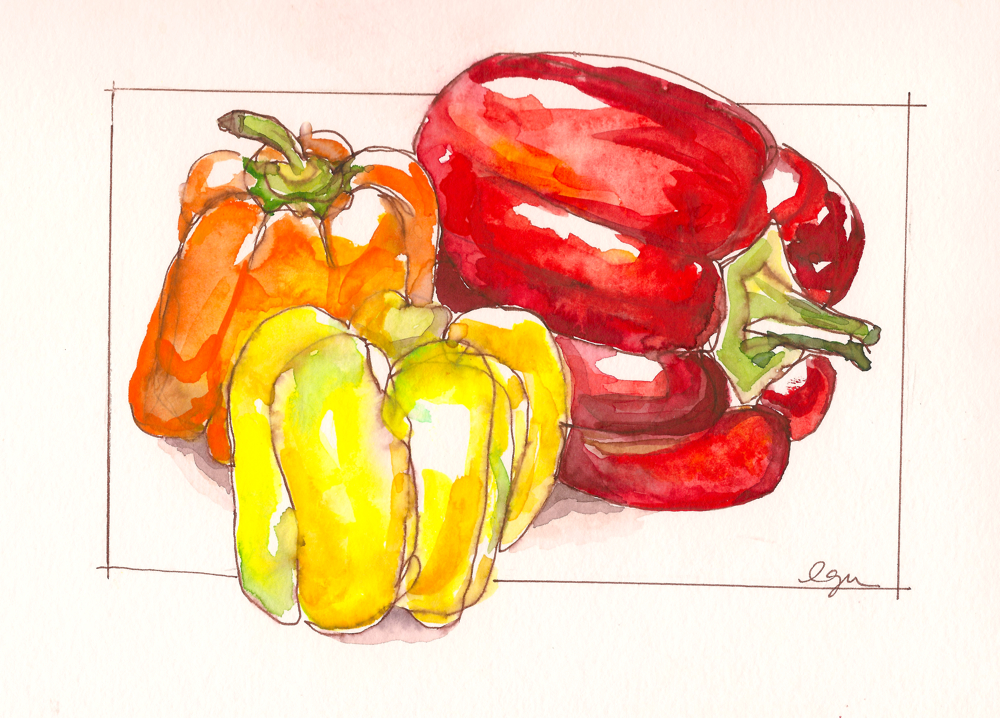



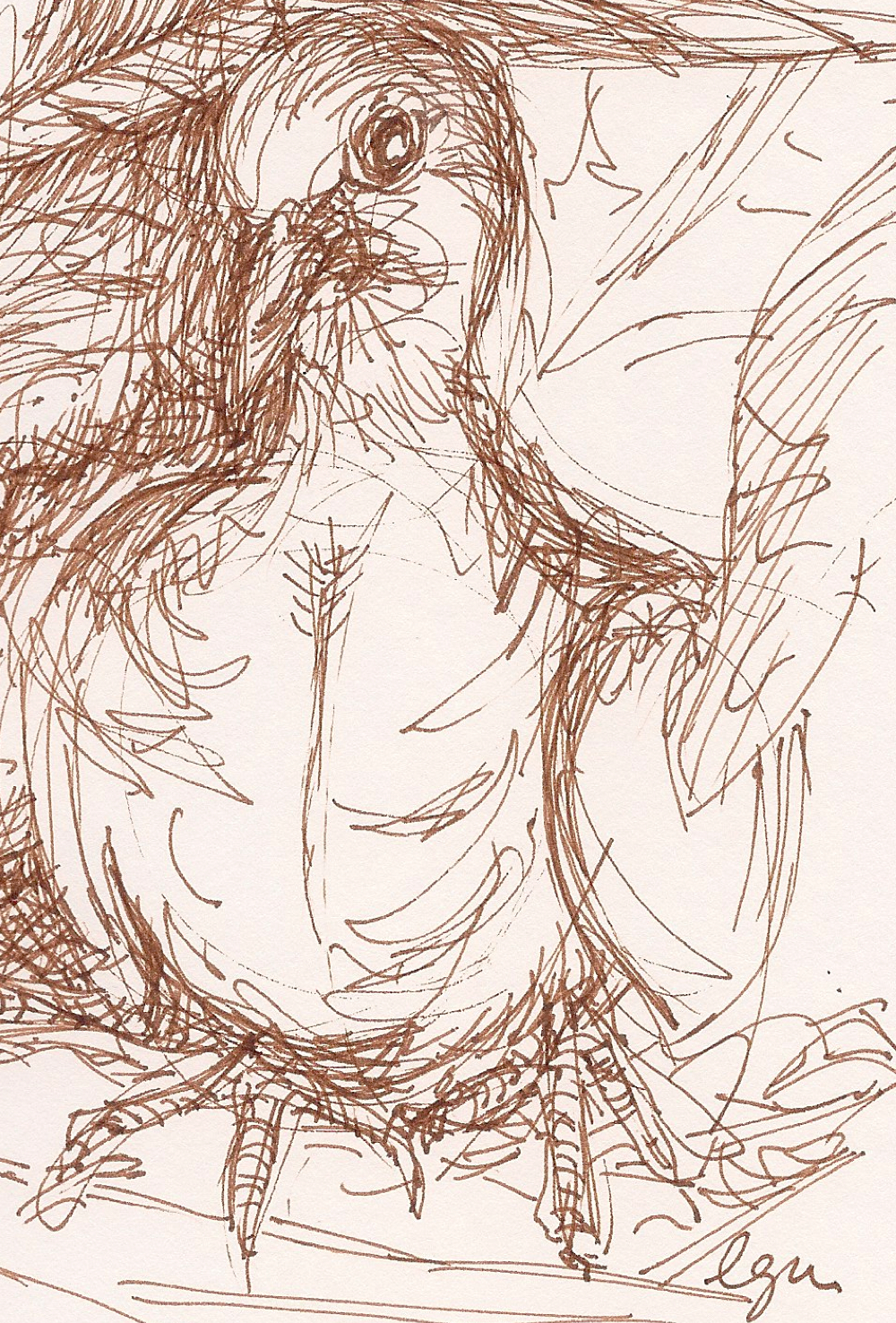
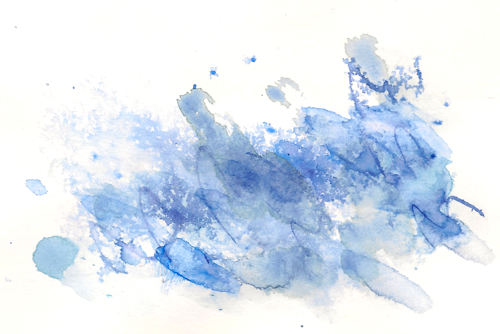

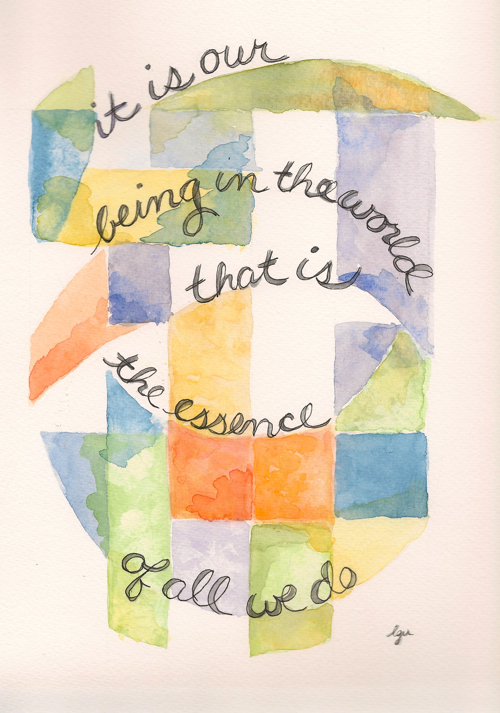

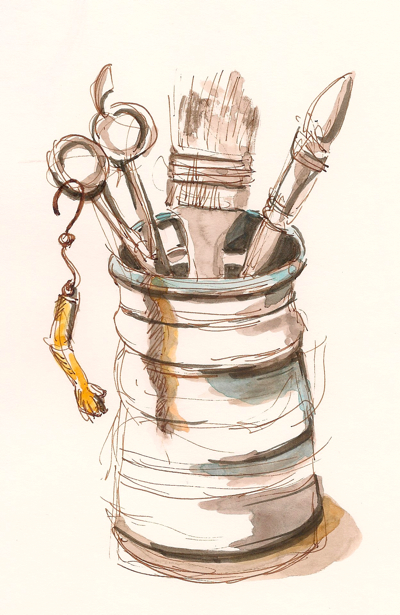
 I have spent a lot of time in various meetings over the last couple of months. When I am not speaking, there is lots of time for listening. I find that by drawing people, it helps me to focus, and also to ‘get’ people in a more
I have spent a lot of time in various meetings over the last couple of months. When I am not speaking, there is lots of time for listening. I find that by drawing people, it helps me to focus, and also to ‘get’ people in a more  complex way, to hear them beyond their words or silences. Here are a few sketches of lovely people from a recent meeting.
complex way, to hear them beyond their words or silences. Here are a few sketches of lovely people from a recent meeting.







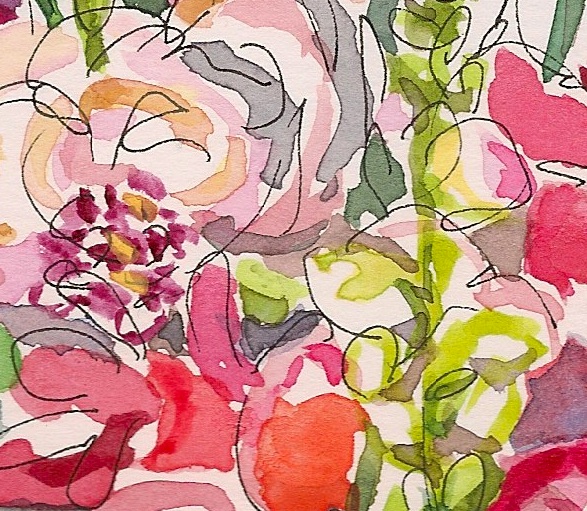


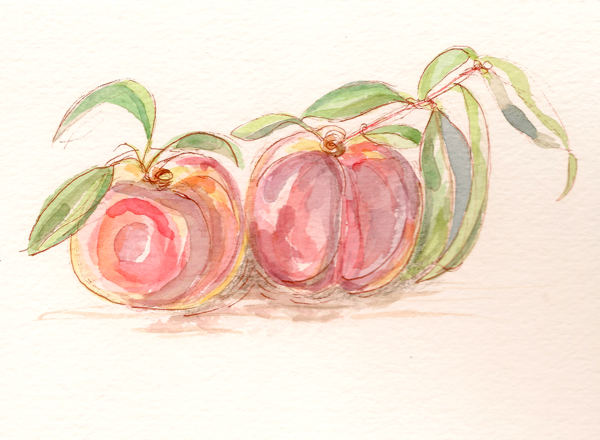








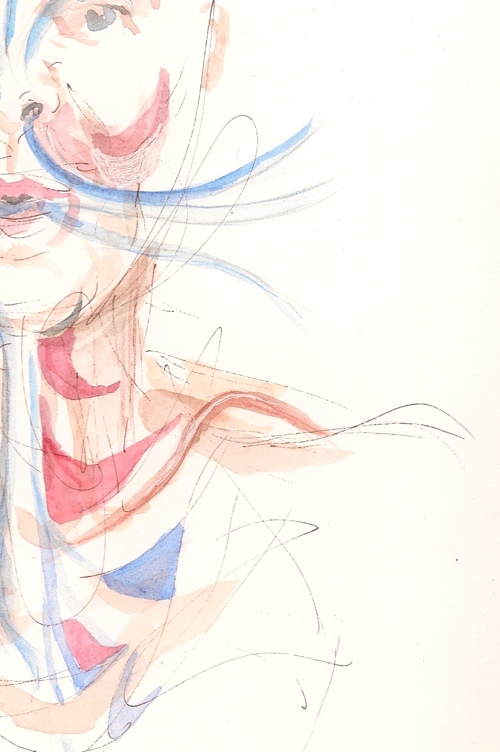


 The world both vivid and lit, each element
The world both vivid and lit, each element

 MUSIC
MUSIC
 As I get ready to attend a workshop in Santa Fe, New Mexico, to revive my life-drawing skills, I was reminded of the following excerpt from the book Only the Lover Sings: Art and Contemplation by the German philosopher Josef Pieper:
As I get ready to attend a workshop in Santa Fe, New Mexico, to revive my life-drawing skills, I was reminded of the following excerpt from the book Only the Lover Sings: Art and Contemplation by the German philosopher Josef Pieper:


 I noticed these leaves while out walking today, and picked up these two from the grey pavement to take home. I drew and painted them to help the beauty stick with me longer. As they sit here on the table together, I also find myself thinking about my relationships with those I am close to.
I noticed these leaves while out walking today, and picked up these two from the grey pavement to take home. I drew and painted them to help the beauty stick with me longer. As they sit here on the table together, I also find myself thinking about my relationships with those I am close to.

 Seamus Heaney’s poem “Postscript,” is a great example of this, and I quote it in the book; you can
Seamus Heaney’s poem “Postscript,” is a great example of this, and I quote it in the book; you can 